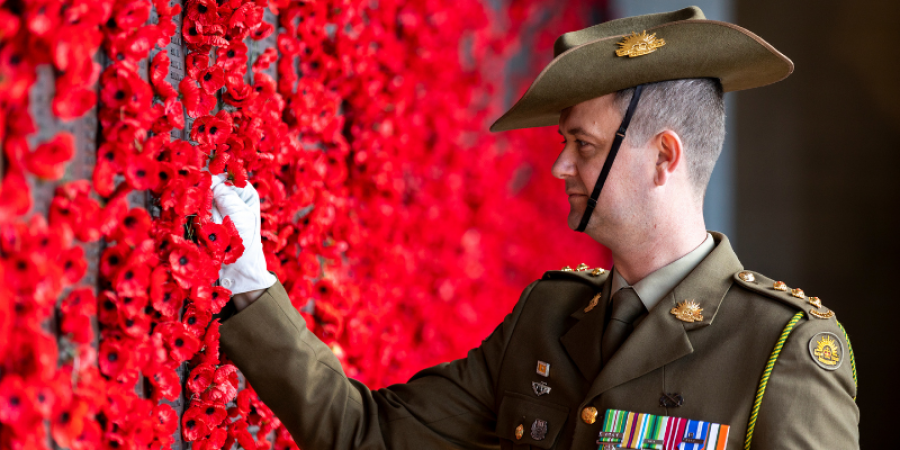
Caption: Australian Army Captain Dean Varian, Operations Officer of Australia's Federation Guard places a poppy for his great uncle Theo on the Roll of Honour at the Australian War Memorial, Canberra, ACT, 1 October 2019. Photo Credit: Department of Defence.
Red poppies are synonymous with Remembrance Day commemorations around the world.
This year celebrates 100 years since the Flanders Poppy was adopted as the commemorative flower of remembrance by The Returned Sailors and Soldiers Imperial League of Australia (the League).
The origin of the red poppy of remembrance can be traced back to Canadian Colonel John McCrae’s famous poem, In Flanders Field, which was written during the Second Battle of Ypres. In this poem, he describes the poppies that marked the graves of soldiers killed fighting for their country.
However, the wearing of the poppy as a symbol of remembrance, began in the U.S. by Ms Moina Michael, before quickly spreading to France and throughout the Allied nations as the accepted flower of remembrance to be worn on 11 November.
When it was officially adopted as the memorial flower of Armistice Day, now known as Remembrance Day, the League wrote:
‘In adopting the Poppy of Flanders’ Fields as the Memorial Flower to be worn by all Returned Soldiers on the above mentioned day, we recognise that no emblem so well typifies the Fields whereon was fought the greatest war in the history of the world nor sanctifies so truly the last resting place of our brave dead who remain in France’.
A century on, red poppies made from cloth continue to be sold in the lead up to Remembrance Day to raise funds for the work of the Returned and Services League of Australia. They also adorn the panels of the Roll of Honour at the Australian War Memorial where these poppies have been placed since 1993 as a tribute of remembrance.
